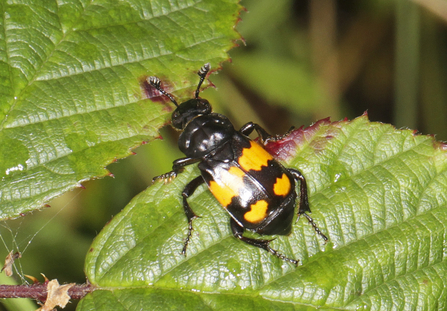I think my first introduction to the circle of life was from the highly accurate nature documentary Disney film, The Lion King. Animals are born, they grow, they breed and they die. But if this is the case, why do we not see more dead animals lying around? It’s because, just like us, nature has its own industrious group of undertakers and refuse collectors – the scavengers and detritivores. These are animals that feed on dead and decaying matter. They play an important role, recycling nutrients back into the ecosystem.
The burying beetles of the genus Nicrophorus are a particularly charismatic bunch of recyclers. There are six resident species of Nicrophorus in the UK, but I have spent seven years researching one burying beetle in particular – Nicrophorus vespilloides. Whenever I run a training session on burying beetles, I start by asking who in the room has ever seen one. The answer is often no one, which may seem surprising given the adults are bright orange and black, common in UK woodlands, and found between April and October. But their lifestyle is elusive. They spend much of their lives underground. When they do emerge to find a mate or a snack, they’re most likely to do so at dusk.



